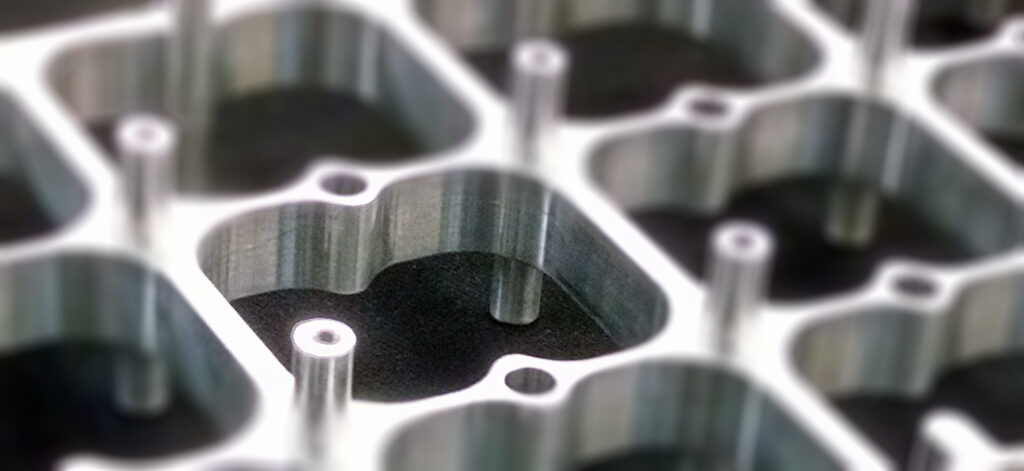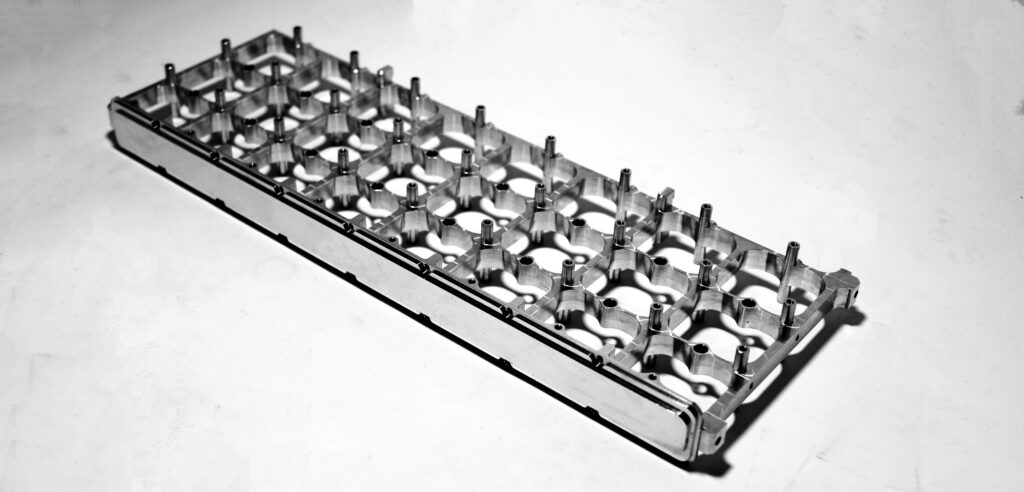
Battery Thermal Management is a well-documented design challenge due to high profile failures ranging from cell phones to aircraft. Proper thermal management not only assures avoidance of catastrophic failure, but can also extend the operating life of the batteries and surrounding components. In many harsh environment applications it is difficult to avoid high ambient temperatures, making thermal design even more crucial. Advanced Cooling Technologies Inc. (ACT), is well-versed with battery thermal management and has created solutions that include passive (natural convection) cooling, active pumped liquid cooling, pumped two-phase cooling and forced convection designs.
One challenging design included an array of battery cells cooled via air. The customer had significant geometric constraints which led to a thin frame doubling as the battery containment device and heat spreader. The only location for a fin stack was at one edge of the heat spreader making thermal conductivity of the frame particularly important. After multiple design discussions, ACT and the customer determined the optimal solution to achieve a high thermal conductivity, light weight and cost effective design was to embed heat pipes into the frame.

The heat sink was along one of the long edges of the frame. Running heat pipes from top to bottom allowed for the most effective thermal design. The heat pipe design was such that the evaporator length would be nearly the entire distance, taking heat from a portion of each of the adjacent battery cells. The condenser end would have a high heat flux zone as only the tip would make contact with the heat sink. For these operating conditions, ACT ran performance curves for copper-water heat pipes and determined that two (2) heat pipes having a 2.1mm OD could be placed in each web of the frame. These heat pipes provide ample heat transport while fitting within the geometry of the battery frame. This approach also allowed for quick installation as there was no complex bending or flattening required
The final design consisted of eighteen (18) heat pipes and was capable of transferring over 200 W at nominal operating temperature. The overall thermal conductivity of the frame dramatically increased and was able to maintain a safe operating temperature of each battery. This solution was also shock and vibration tolerant.
Advanced Cooling Technologies has the expertise to provide custom solutions for your battery thermal challenges. Contact one of our thermal engineers today.

